Overview
If you have services that are delivered over a series of appointments, you may have what we call Subscription Style Services
Subscription-style services are used for cases where you want to schedule a fixed length service where the appointments are distributed over a series of visits. The most common applications are seasonal pest control or lawn services.
This article will review:
Recurring vs. Seasonal
There are several ways to schedule subscription services, and the right approach depends on whether your service is continuous or seasonal.
A continuous service repeats on a regular interval (weekly, monthly, or otherwise) and continues until the client cancels. These are scheduled using the recurrence settings on appointments. Learn more about Recurring Appointments.
A seasonal service, on the other hand, runs for a defined period with clear start and end dates. For these, you’ll want to check the Subscription service option when setting up the service. Seasonal subscriptions can also be set to auto-renew if you communicate that expectation to your clients. When it’s time to renew, the Renew Season function can generate proposals for the upcoming period. This is also an opportunity to include additional options, allowing clients to upgrade their service level. Once proposals are ready, you can bulk-accept them—either for all renewing clients or just those flagged for auto-renew—to start the new season.
The key difference in scheduling comes down to whether your service runs continuously or in defined seasons. Continuous delivery points to recurring appointments, while seasonal delivery relies on subscription appointments.
Key Differentiator
- Continuous delivery → use recurring appointments.
- Seasonal delivery → use subscription appointments.
Scheduling Settings
The first thing you will want to do to configure a Subscription Style service is to set the Scheduling Mode as Subscription when editing the service (Control Panel > Services > Edit).
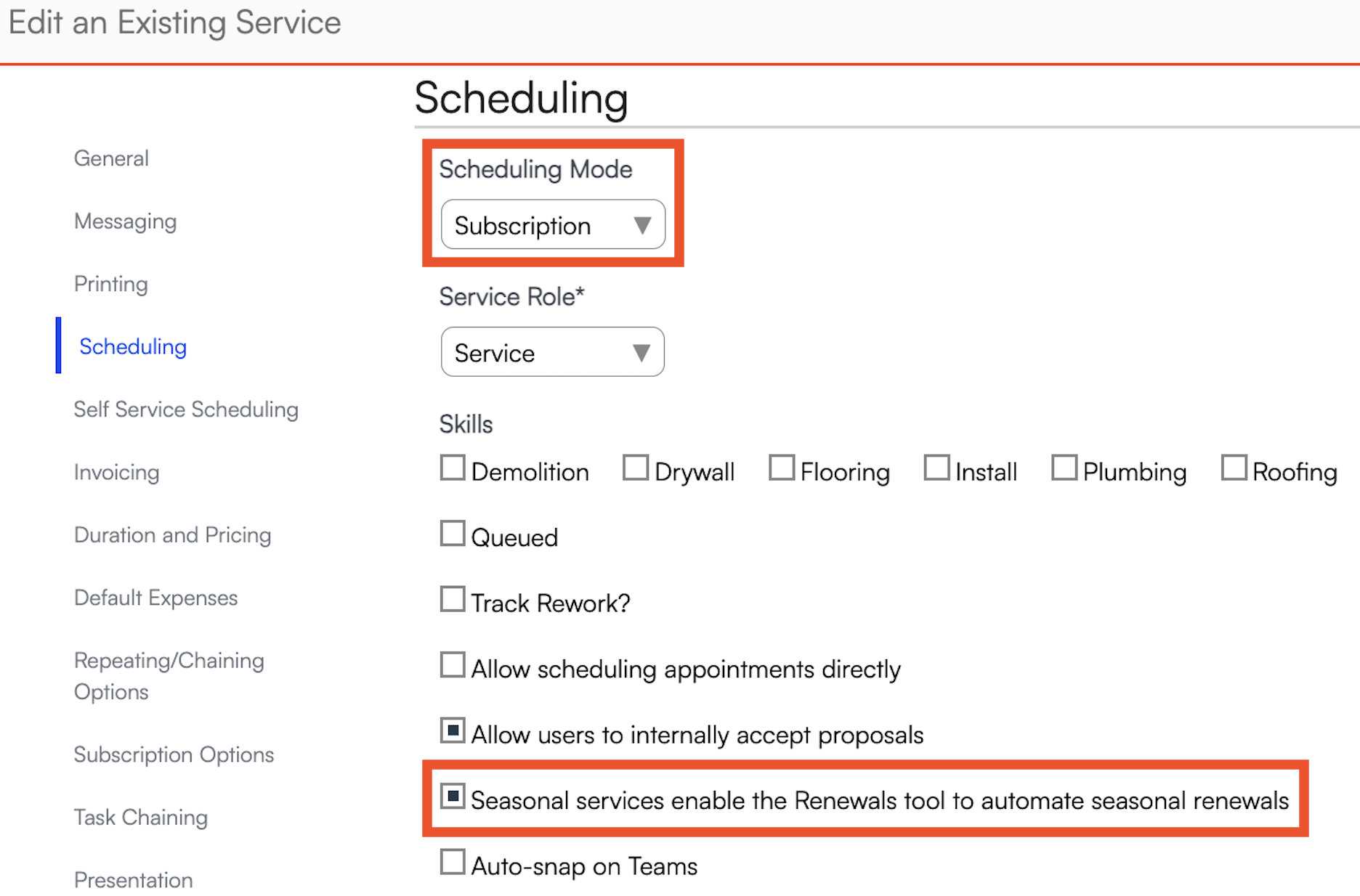
Check the box for Seasonal in order to enable the Renewals Tool which allows you to automatically generate the proposals for the next season.
You can use this tool to generate the proposals for the next season in the Proposals grid under the Actions menu.
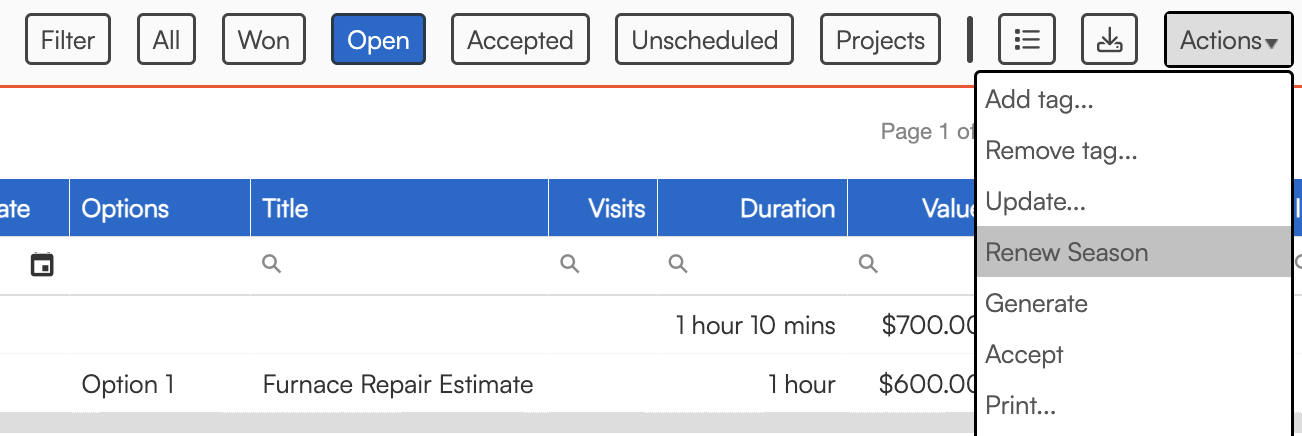
When renewing the season, you can configure Route Schedule settings, select a Proposal Template, apply payment plans, and more. If you generate them as open proposals, clients can accept their own proposals or you can bulk-accept them on their behalf using the Actions menu again.
Invoicing Settings
The next place you'll want to look is the Invoicing section. This will depend on your desired workflow, but a common configuration is:
- Finish Action → Close Appointment
- Invoicing Mode → Proposal Accept
This will create a flow in which the invoice for the subscription is generated upfront, allowing you to take deposits or set up payment plans directly on the invoice.

Subscription Options
Further down on the page, you will find a section to set Subscription Options.
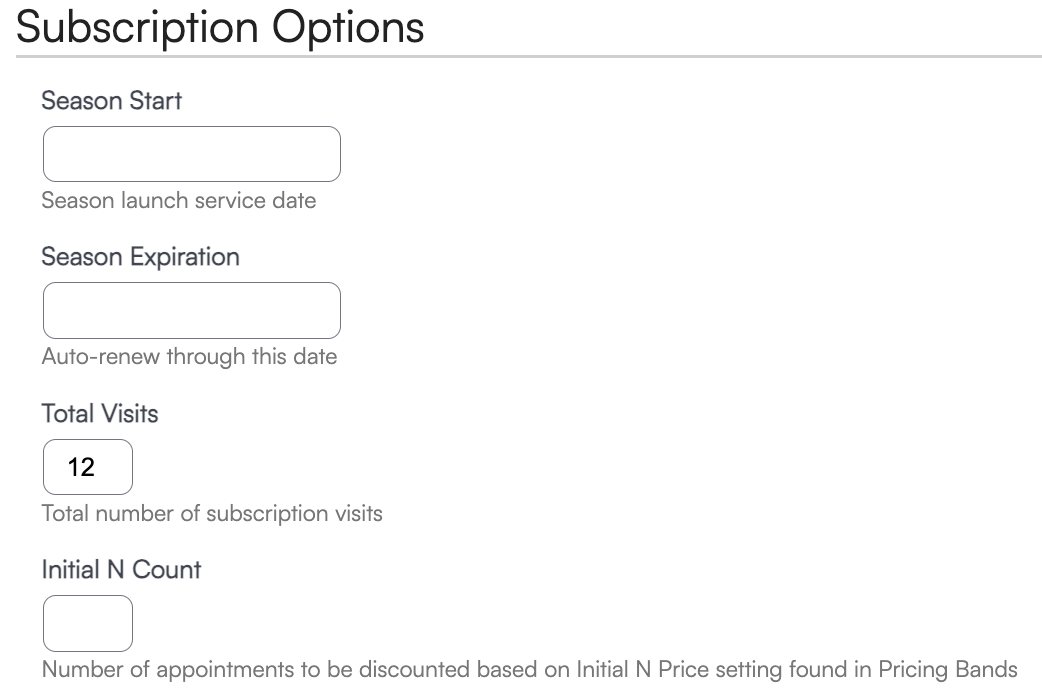
- Season Start - set the start of your season for this year
- Season Expiration - set the end of you season for this year
- Total Visits - set a total number of visits to be scheduled for the season
- Initial N Count - Set the number of initial appointments to be pro-rated
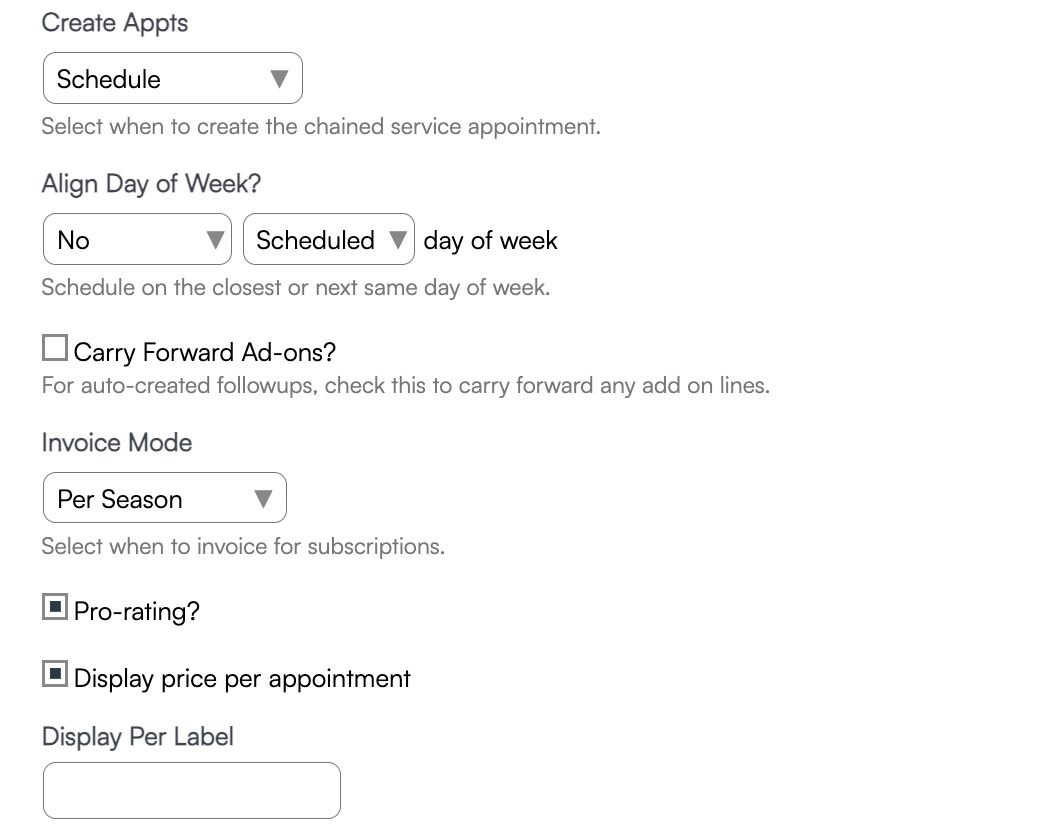
- Create Appts - determine how each appointment will be scheduled
- Schedule - schedule all appointments upfront
- Tentative on Finish - schedule tentatively based on the finish of the previous appointment
- Queue on Finish - queue based on the finish of the previous appointment
- Align Day of Week? - choose to align to the nearest or next closest day of the week based on the scheduled, target, or actual appointment date
- Carry Forward Add Ons? - continue to include add-ons from one appointment on future appointments in the subscription
- Invoice Mode - choose to invoice once, per appointment, or per season
- Pro-rating? - enable pro-rating which will automatically adjust pricing when appointments are added or taken away.
- Display Per Appointment? - display the pricing per appointment
- Display Per Label - provide a label for the per appointment pricing
Pro-Rating
You can turn on pro-rating for your subscriptions service, which will automatically adjust pricing when appointments are added or taken away.
In addition, turning on pro-rating in Control Panel > Scheduling will automatically drop appointments that are past date from your proposal when scheduling.
Example: a proposal for a barrier spray is created with ten upcoming appointments. The customer accepts the proposal after the first date passed. With these settings turned on, when you schedule the treatments that first appt will drop off the schedule, and the price will adjustment for one fewer appointment in the chain.
Spillover
Activating the Spillover feature, follow the steps listed below. All of these steps will take place in Control Panel > Services.
On the Route Schedule:
Clear the end date on your Route Schedule 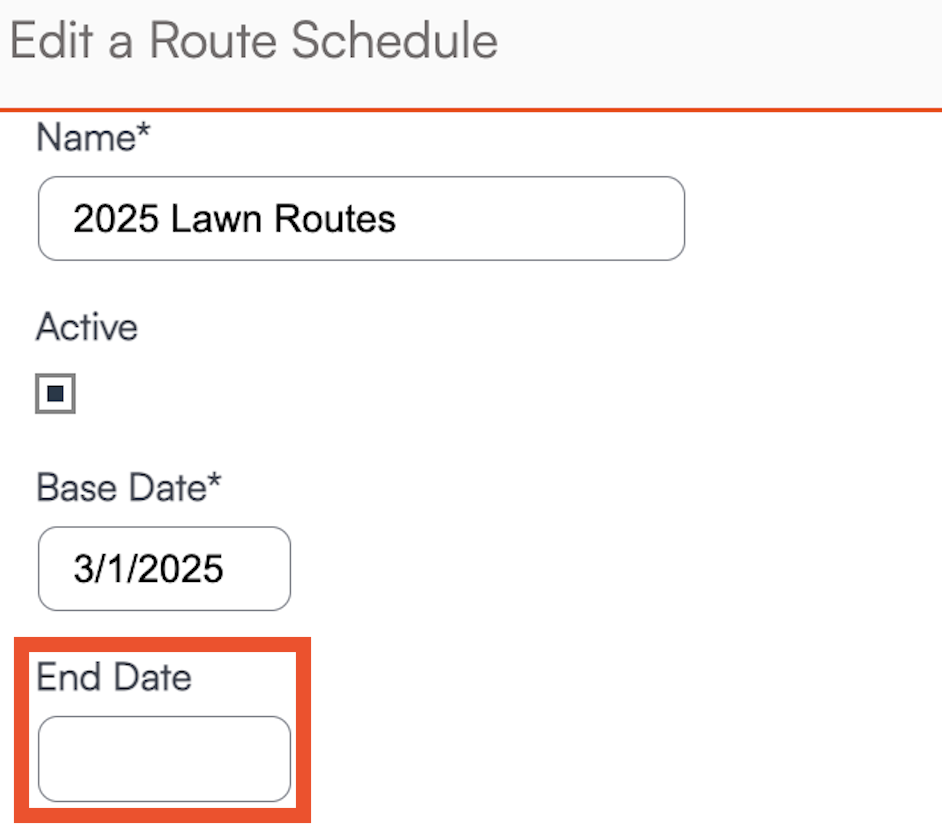
On the individual service(s):
- Make sure the service Scheduling Mode is set to Subscription
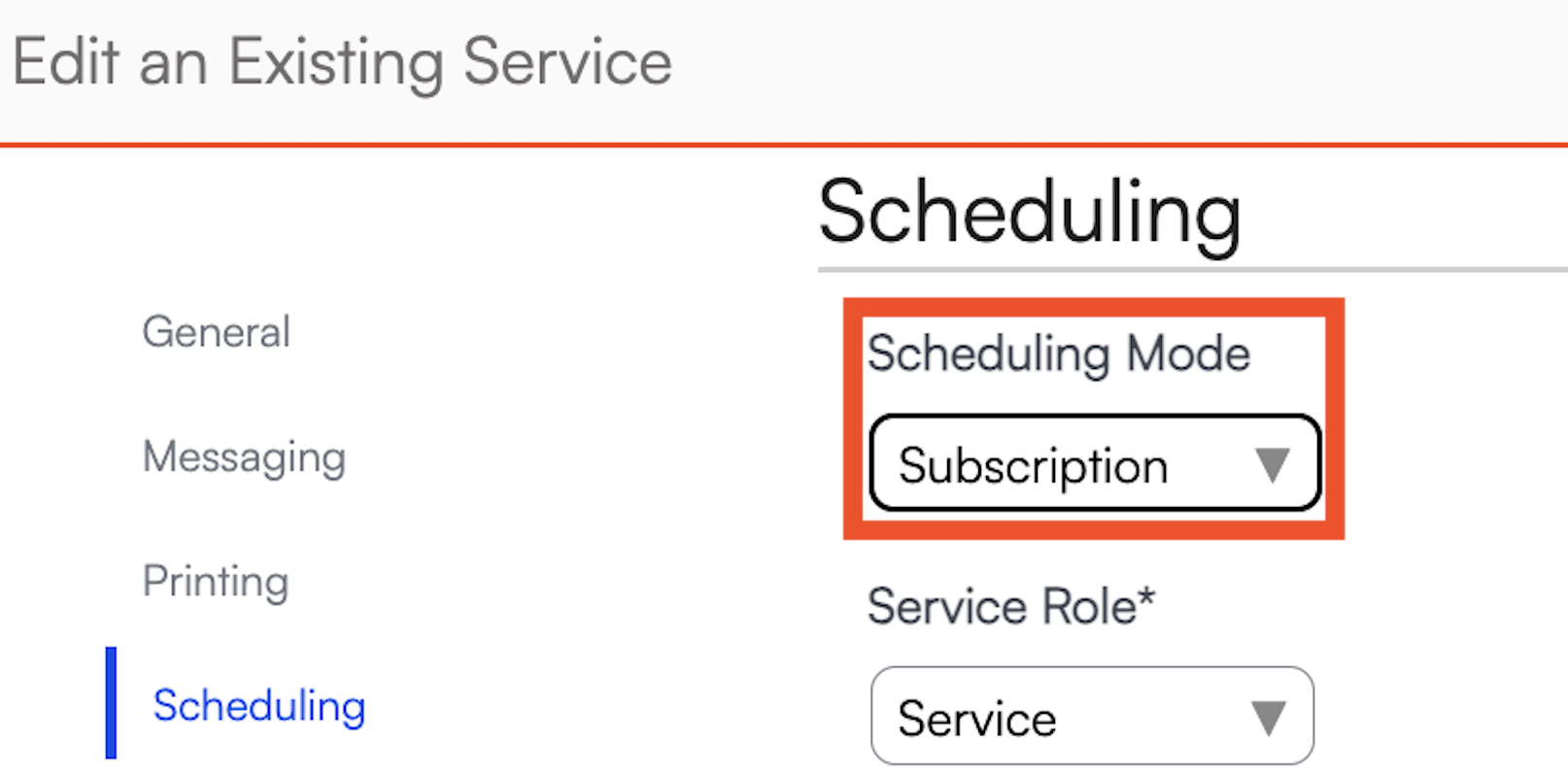
- Turn off Pro-rating (in the Subscription Options section)
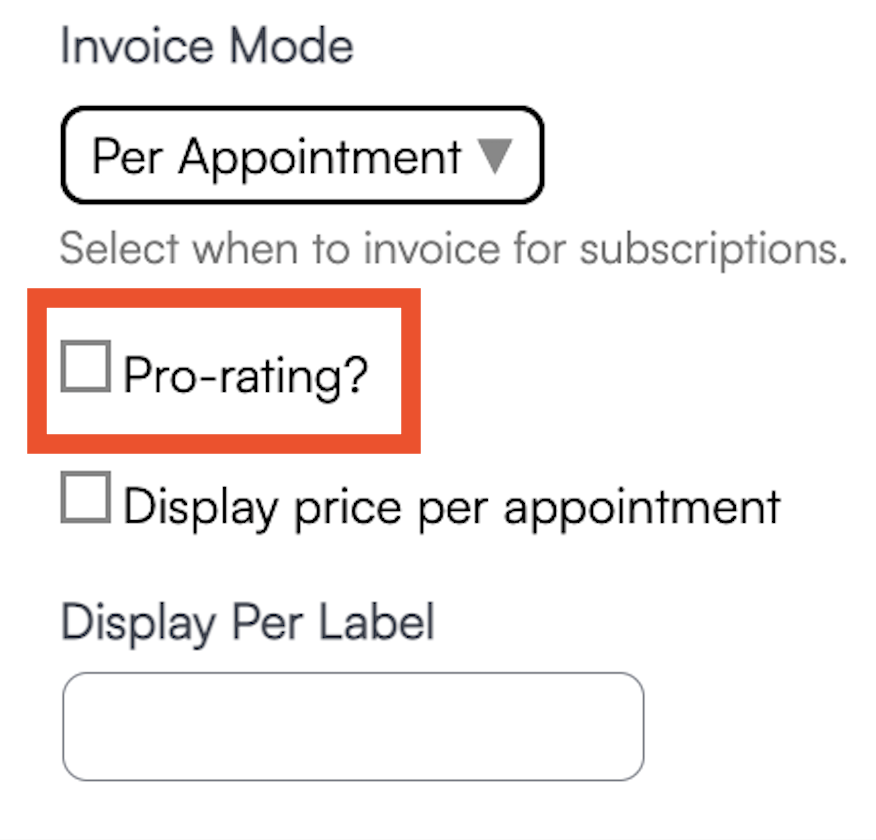
- Set a Season Expiration date
- This year's season
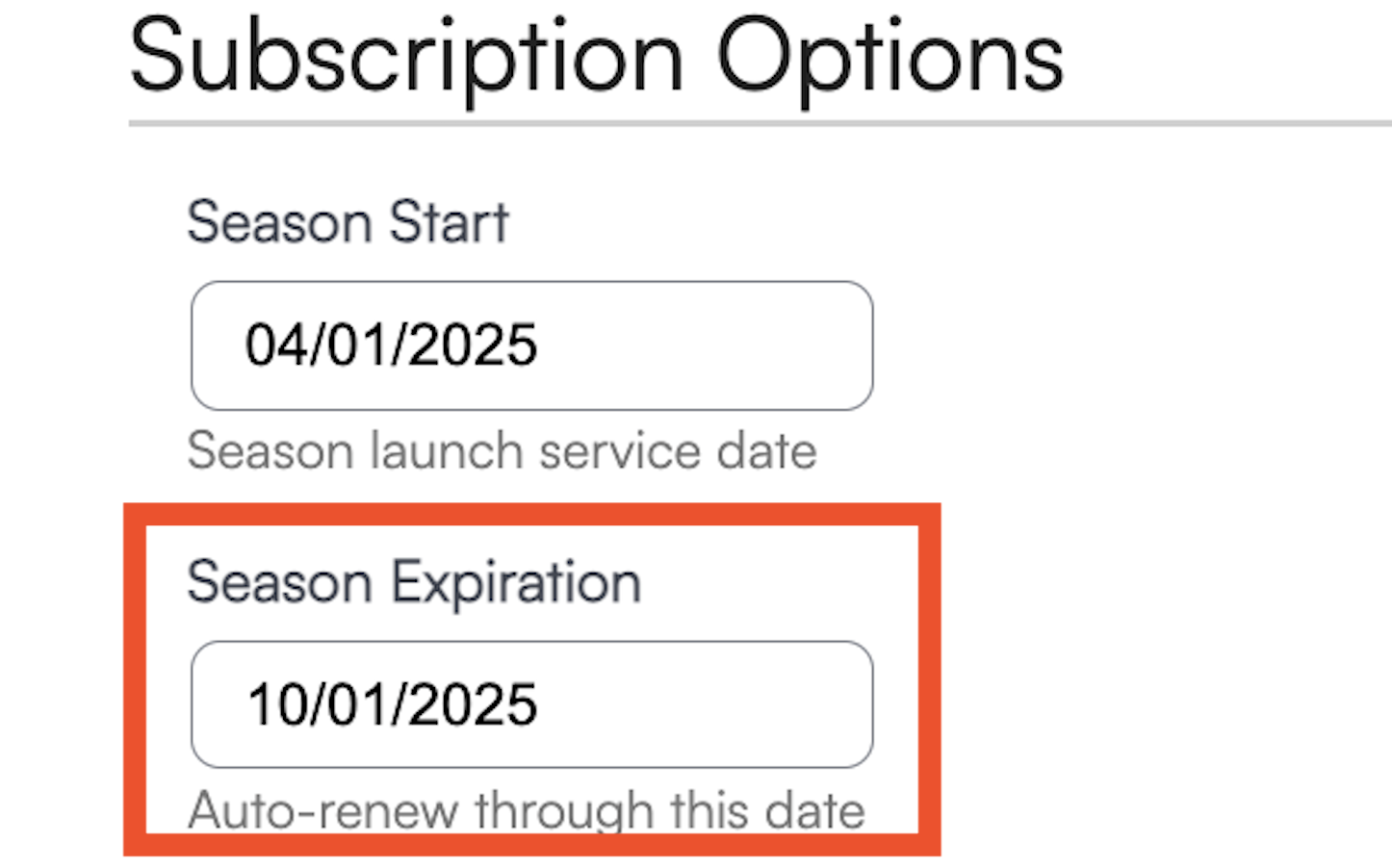
- Once your season starts, then change the Season Start date so that it's the beginning of your next season.
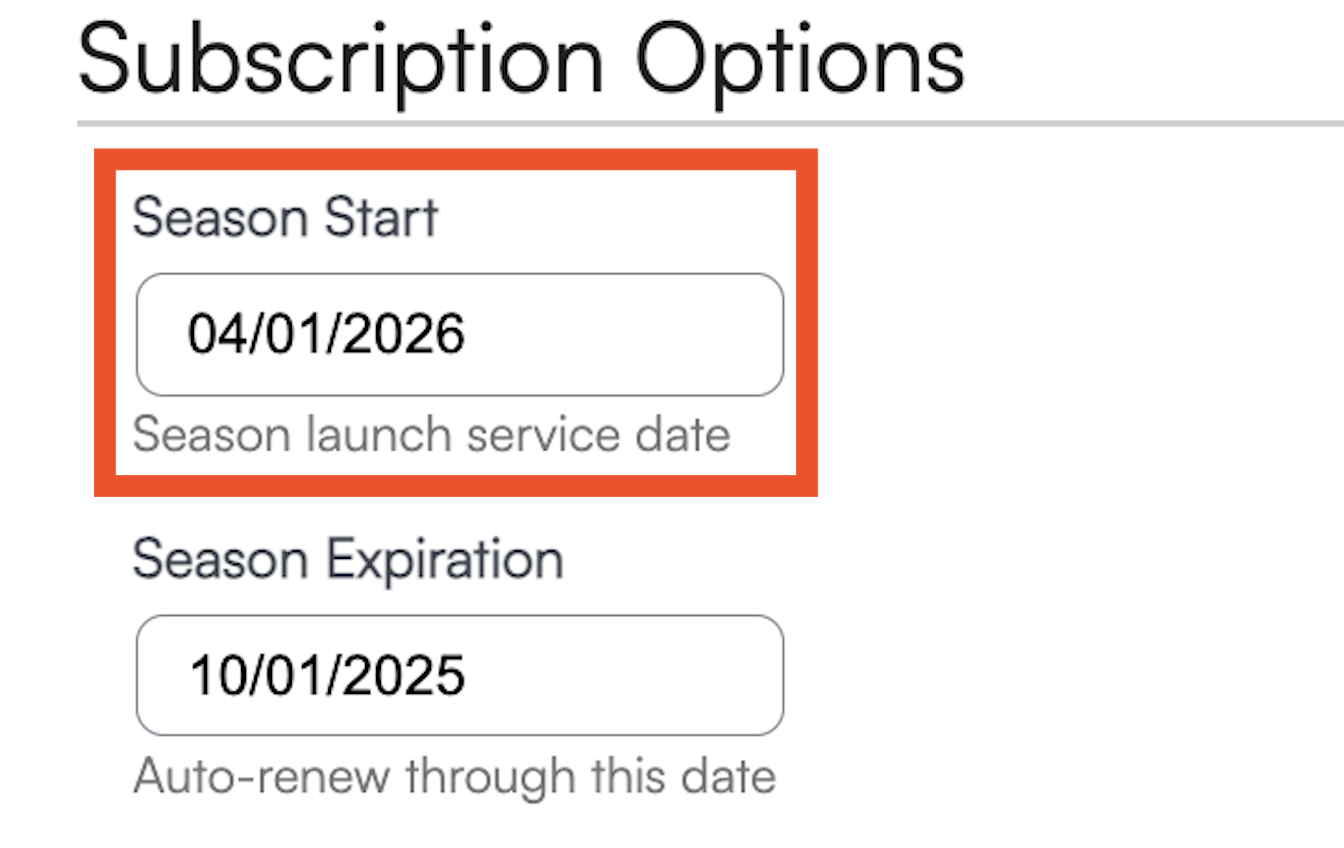
- This year's season
Any dates that don't fit on the current season will "spill over" to the beginning of the next season. Any part distributions you have will continue to follow the steps you've set up.
Recurring Billing
For either subscription-based services or more standard recurring services, you may want to include recurring billing plans for specific customers. To learn more about the options for recurring payments, please read Payment Plans and Methods.
FAQs
The part associated with the service is priced at the per-visit price. I want the proposal template to show the total price after a certain number of visits. How would I set that up?
Typically for subscription based Services, the full price will be generated on the Proposal and then, with either the setting checked on the Service, or via a payment plan, the price will be shown per appointment. That is how the subscription model was built.
The options you have here would be:
- Use subscription pricing as is, with the full season price being calculated on the individual part based on property size (or however you measure) and using Pro-Rating to calculate that total based on the number of appointments. Additionally on the Service you can check "Display Price Per Appointment" to show that breakdown if not offering payment plans
- Make the Service recurring instead and set the per appointment price and then manually change the quantity when creating the Proposal to be the number of appointments. Then the quantity would be directly tied to the number of appointments and the price on the part would reflect that per appoint price. The catch would be when creating Proposals, the quantity would have to be manually input depending on the number of appointments.
How do I determine if I want to use a Subscription or Recurring Scheduling Mode?
A service may be seasonal or recurring. Seasonal has defined start/end dates for each season and recurring just repeats at equal intervals indefinitely until the client cancels. If seasonal, then check the Subscription service checkbox on the service. Otherwise, just schedule as Recurring or Normal and use the recurrence settings for the appointments.



